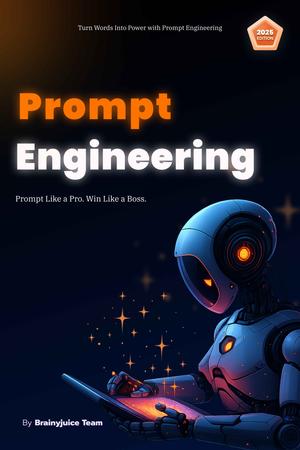
Every successful project follows a structured path known as the Project Life Cycle. This life cycle breaks down the project into clear, manageable phases - from the moment an idea is born to its final delivery and review.
Understanding each phase of the life cycle helps you plan better, avoid common pitfalls, and deliver projects that meet expectations. Here’s a deep dive into each phase: Initiation, Planning, Execution, Monitoring & Controlling, and Closure.
1. Initiation Phase: Laying the Foundation
This is where it all begins.
The goal of the Initiation Phase is to define the project at a high level and evaluate whether it should move forward. No detailed plans or tasks yet, just the vision, purpose, and feasibility.
Key Activities:
-
Define the project goal
What is the purpose of this project? What problem are we solving?
-
Identify stakeholders
Who has interest or influence over this project (clients, team, investors)?
-
Create a business case or project proposal
Justifies why this project should exist, based on cost, value, risks, and benefits.
-
Conduct a feasibility study
Is it technically and financially possible?
-
Develop a Project Charter
A short document outlining scope, objectives, stakeholders, and the authority of the project manager.
Deliverables:
- Business Case
- Project Charter
- Stakeholder Register
- Initial Risk Identification
Tip: Many failed projects happen because they skipped or rushed this phase.
2. Planning Phase: Mapping the Journey
Once the project is approved, planning begins.
This is one of the most important phases. A solid plan guides the team, reduces risks, and sets realistic expectations.
Key Activities:
-
Define Scope
What exactly will be delivered? What is not included?
-
Create Work Breakdown Structure (WBS)
Break down the project into smaller, manageable tasks and milestones.
-
Create a project schedule
Estimate how long each task will take and assign deadlines. Gantt charts are commonly used here.
-
Assign roles and responsibilities
Who is responsible for what? Use tools like a RACI matrix.
-
Budgeting
Estimate costs for resources, tools, equipment, and unexpected expenses.
-
Risk Management Plan
Identify potential risks, their impact, and how you’ll manage or avoid them.
-
Communication Plan
How and how often will you update stakeholders? Which tools (emails, meetings, dashboards)?
-
Quality Plan
What does “success” look like? Define performance standards and quality metrics.
Deliverables:
- Project Plan
- Scope Statement
- Schedule (Gantt chart, milestones)
- Budget and Cost Estimates
- Risk Register
- Communication Plan
- Resource Plan
Tip: The more detailed your planning, the fewer surprises you’ll face later.
3. Execution Phase: Doing the Work
This is where the plan becomes action. The Execution Phase is all about doing the work defined in the plan - building, developing, producing, and delivering.
Key Activities:
-
Assign and manage tasks
Team members work on their assigned tasks as per the project schedule.
-
Coordinate people and resources
Ensure everyone has what they need - tools, information, support.
-
Hold regular team meetings
Keep everyone aligned and solve problems quickly.
-
Manage communication
Share updates with stakeholders and maintain transparency.
-
Quality assurance
Conduct checks and tests to ensure the work meets defined standards.
Deliverables:
- Progress Reports
- Completed Deliverables
- Performance Updates
- Quality Audits
Note: In complex projects, this phase often runs in cycles, especially with Agile or iterative methods.
4. Monitoring & Controlling Phase: Staying on Track
Often performed alongside execution, this phase ensures the project stays on scope, schedule, and budget.
Think of it as a dashboard and steering wheel, you’re constantly checking performance and correcting course as needed.
Key Activities:
-
Track progress
Compare actual performance with the plan using tools like burndown charts or earned value analysis.
-
Manage scope
Prevent scope creep - any work not originally planned should go through a change approval process.
-
Control budget
Track spending and make adjustments to avoid overruns.
-
Manage risks and issues
Monitor new risks and apply mitigation strategies.
-
Maintain quality
Conduct inspections, reviews, and testing to ensure outputs meet requirements.
Deliverables:
- Status Reports
- Change Requests
- Updated Risk Logs
- Quality Control Reports
- Budget and Schedule Variance Reports
Tip: Always involve stakeholders in change decisions, they affect scope, cost, and timeline.
5. Closure Phase: Wrapping It Up
When all tasks are complete, it’s time to formally close the project.
This phase ensures no loose ends are left. The team reflects, hands over deliverables, and learns from what happened.
Key Activities:
-
Final deliverable handoff
Submit the finished product or service to the client or end-user.
-
Confirm acceptance
Get formal sign-off from stakeholders that the work is complete and satisfactory.
-
Release resources
Free up team members, equipment, and funds for future projects.
-
Close contracts
Settle payments, review vendor performance, and terminate agreements.
-
Conduct post-mortem
What worked well? What didn’t? What can be improved?
-
Document lessons learned
These insights can help future projects avoid the same mistakes.
Deliverables:
- Final Product or Service
- Acceptance Document
- Project Closure Report
- Lessons Learned Document
- Archived Project Files
Tip: Don’t skip the review, this is where teams grow stronger.
Why Understanding the Project Life Cycle Matters
- Helps structure chaotic tasks into a clear path
- Reduces waste and miscommunication
- Allows better risk and cost control
- Improves team coordination
- Delivers better results with less stress






